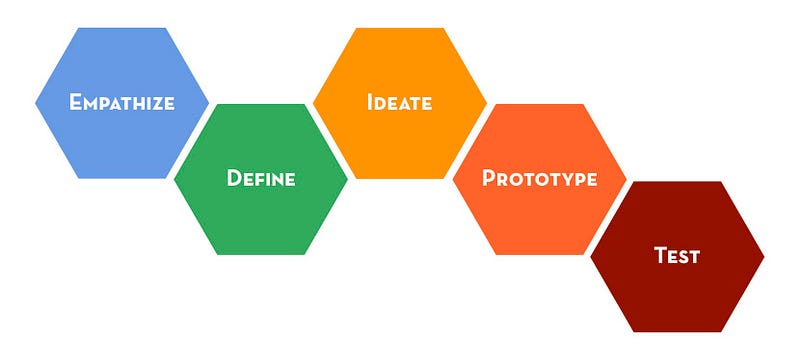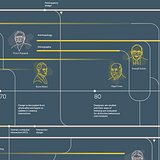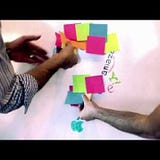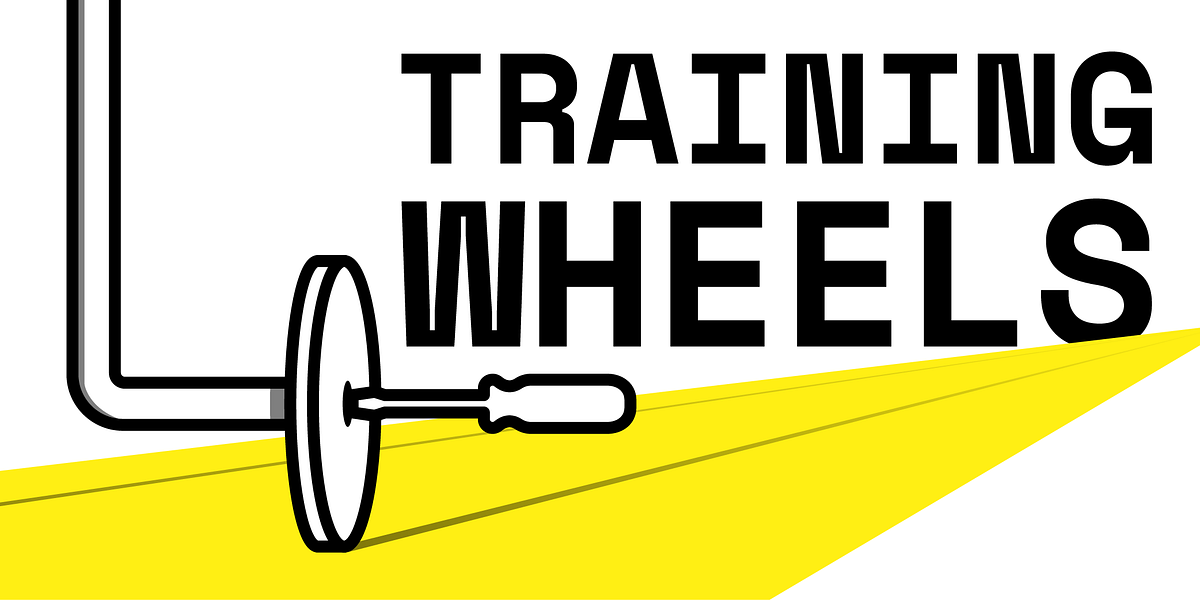Quite often, the problem with tools and workshops that promise to develop your “creativity” or “design thinking” is that they get boiled down to something methodical and prescriptive.
The explosion in popularity for these frameworks comes from our expectation that future generations and work environments will be cross-disciplinary, collaborative, and elusively “innovative”. This has resulted in companies and schools around North America investing in thousands of initiatives, in a race to make their employees and students world-leaders in these areas.
In reality, the ambiguous competencies of “collaboration”, “creativity” and “innovation” require high levels of emotional intelligence, more commonly referred to as “soft” skills, which are not easily trainable in one-off workshops. You cannot make someone understand the power of empathy merely by forcing them to interview their user. You cannot force someone to be creative merely by forcing them to use more and more Post-its®.
Before we begin exploring potential solutions to this, it’s important to first look at the definitions of the two most popular creative frameworks for non-creatives, namely design thinking and design sprints.
Design thinking refers to creative strategies designers use during the process of designing. It has also been developed as an approach to resolve issues outside of professional design practice, such as in business and social contexts. — Wikipedia
A Design sprint is a time-constrained, five-phase process that uses design thinking to reduce the risk when bringing a new product, service or a feature to the market. It has been developed and popularised by Jake Knapp, John Zeratsky and Braden Kowitz and is being used in almost all industries. — Wikipedia
These definitions suggest two things:
- We actually understand what the creative process is exactly
- Five sequential steps is all there is behind creativity

Actually, the broad definition of “design thinking” is a phrase with a noun, “design”, and a verb, “thinking”, referring to the intuitive process a designer goes through to find a solution. “Design Thinking” (capitalized for differentiation), on the other hand, has practically become a proper noun that refers to the five steps we see popularized by the likes of the d.school at Stanford and IDEO.
This is not to say that these tools have no merit; it’s the oversimplification that they imply which is problematic. In fact, IDEO and d.school are places with incredibly smart people and the tools they build definitely hold immense value. What the tools don’t come with, however, is a disclaimer stating that the benefit of a solution in one context cannot be transferred blindly and as successfully into another. Ten of the world’s best designers sitting around a table working with a framework they created themselves will surely be a massive boon for their productivity — applied verbatim to a team of three classically trained accountants with no supervision, and the “creative potential” will not be as immediately apparent.
Instead of focusing on the, likely to be disappointing, immediate product after a “Design Thinking” session, there is another perspective that I’d like to suggest.
A learning perspective for frameworks as opposed to sheer productivity
If we agree that designers are good at collaboration, creativity and innovation, then naturally we can deduce that good designers have a higher ability to tap into their emotional intelligence. In turn, the value of these frameworks shouldn’t be in the potential for an immediate output, but rather in the ability to allow participants to practice and execute using emotional intelligence.
In essence, Design Thinking is the training wheels for design thinking. It is not something to be used for all challenges, but as an activity to help people empathize with their team members and their products users, as well as unlock the team’s ability to move more freely when faced with a creative block in the future.
This small distinction is akin to the drills used in teaching music students. You need to have memorized your G scale through constant practice and exploration before you can improvise successfully within it. Continuing with the metaphor, much like a sufficiently seasoned music teacher will know when to insist the student stick to one scale and when to allow them to let loose, so will a good design facilitator take a read of their audience and see if they can work with such a framework, and where it should the process should be bent.
Being pedantic about the order of the creative process and the specific exercises needed misses the point. All the articles, books, workshops, and corporate implementations that insist on a particular order make for an unpleasant experience for everyone involved.

The suggestion here is to think of this as a set of training wheels to activate your emotional intelligence. One day, those wheels will no longer be needed, or will be reinstalled momentarily to jig your memory, but you won’t be sitting in a circle sketching post-its for the rest of your life. The best training wheels are the ones that get you comfortable enough to one day remove them.
If you find this notion interesting, and you’re looking for a way to get yourself or your team thinking more creatively and emotionally, consider making your own process to achieve that.
Below, I’ve outlined a healthier foray into trying out design thinking then ultimately forming your own exercises to help people develop emotional intelligence.
1. Read up on the history of it and understand where it truly came from.
The history is important for understanding the context in which these tools were created. That will clarify why the methods are designed the way they are. This here is a good start:

2. Follow one prototypical design sprint yourself to the T
There are many complete methodologies out there that you and your team can try. The Design Sprint Kit from Google is only 3 days long and is comprehensive enough for you to get a feel. It’s important to follow it to the T to make an accurate opinion and judgement about it.

3. Look at the outcome of that sprint, and reflect on it with your own opinion.
Follow your first gut feeling, and don’t worry if it turns out that you didn’t like the process. Write your thoughts down somewhere. You’ll be going back to these as you validate how you feel about the process and it’s ability to be productive for your team.
4. Read critiques from the web and gather feedback your team — if you’re interested in their thoughts
Remember, we’re setting up training wheels for emotional intelligence so it’s important to see what others think of all this. Gathering feedback from your team is essential if this is meant to be a team process, but you also want to be sure that your team has also understood the context and relevance of the exercise.
Equip yourself with some contrarian opinions from around the web to ensure that your thoughts are not leaning too far on optimism. It’s easy to get caught up in the hype and positivity that everyone is screaming about regarding design processes. Open up a web browser and look up critiques of the process — there is no shortage of them. I’ve listed a few to get you started:


5. Check for cultural context
A group called Decolonising Design is opening a discourse around the cultural contexts under which these design processes are being developed. It’s not the lightest of reading, but there are some very important statements in their work. Here’s a quote from their editorial statement:
To date, mainstream design discourse has been dominated by a focus on Anglocentric/Eurocentric ways of seeing, knowing, and acting in the world, with little attention being paid to alternative and marginalized discourses from the non Anglo-European sphere, or the nature and consequences of design-as-politics today.
6. Reflect on those critiques and compare them with your own notes.
Reflection is one of the most important tools in learning and decision making. After you’ve gathered opinions, look over your own notes again and rewrite some of your notes if any new realizations came about. Analyze those edits and decide if you will use these kinds of exercises in your team.
If you decided the whole ordeal is not for you, then you can stop reading here.🛑
7. Begin editing the process to meet your teams needs
It’s typically unlikely that the process worked exactly as is for your team, and trusting it blindly would be fairly irresponsible. There are hundreds of resources out there with exercises and activities that could facilitate team dynamics, user research, co-creation, etc. Below are a few of the better lists that I’ve found:


s participants at work, with their permission, then asks questions. To learn how…

Don’t shy away from things that are a little more “out there” such as the Alternative Unknowns method the Extrapolation Factory (full PDF here).

8. Continually get feedback from your team and use various exercises for different purposes
Once you’ve started making your own workshops, remember to continually have conversations with your teammates about these processes. No need for some post-it, whiteboard, convoluted feedback process. Just go for a coffee or have a 5 minute chat by the water cooler.
9. Feel free to disagree with the 8 steps above
Those are 8 simple steps that tend to be the basis for many simple forms of reasoning, but they are not the absolute way to form an opinion about this. Despite the fact that they may seem logical, you’ll be surprised at the number of events I’ve been to where someone forced my team to put up post-its on the wall, or start dot-voting, when we was clearly not struggling. There have even been instances where the moderator didn’t allow us to use a tool that we invented to help us facilitate our own process. That experience compelled me to create an explicit “Feel free to disagree” clause.
The whole point of these exercises is to help you see the world though a “user-centered” frame, to empathize with your user, and to work with your team more fluidly. Different individuals have different needs for their creative spark. I need to laugh, make jokes, take hundreds of breaks, and be allowed to suggest totally insane things. Others need silence before they come out of their shell. If your “design thinking” process is offending any of these people so significantly that they can no longer work, then it’s failing.
You don’t measure the success of a cyclist with training wheels by the number of wheelies they can pop, instead you focus on the growth in their confidence. In the same vain, after implementing a framework in your team, their emotional growth should be your measure of success as opposed to the immediate quality of the final product.
